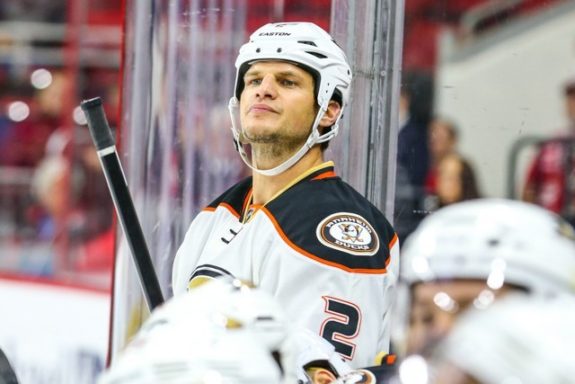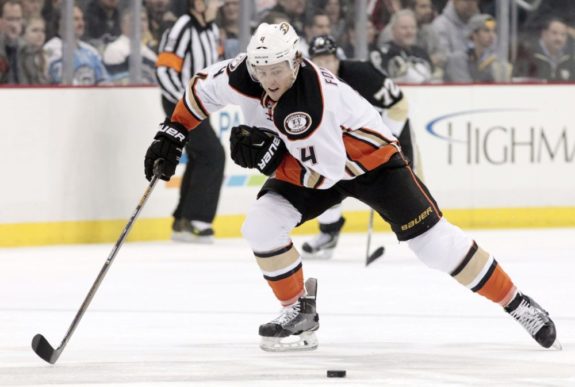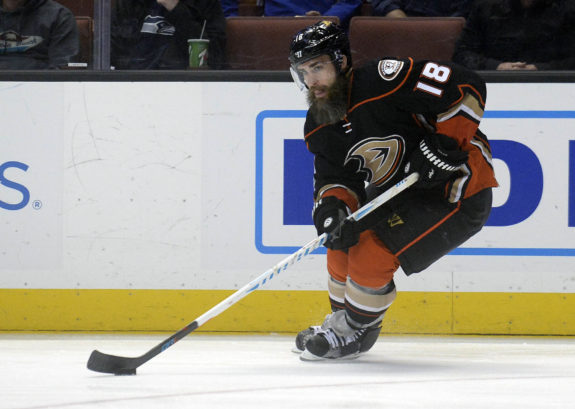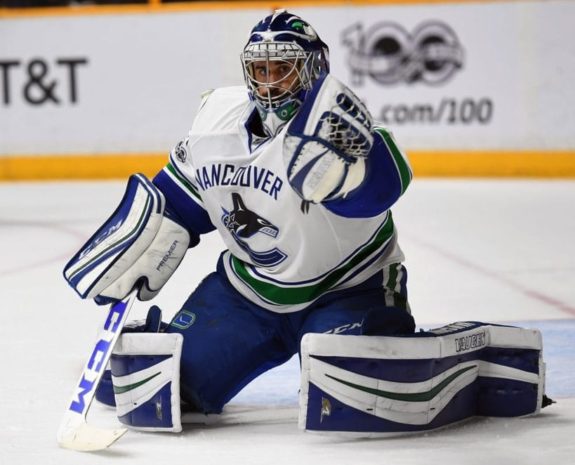With the month of September underway, the dog days of summer are just about over. Training camp and preseason games are a mere couple of weeks away. For Anaheim Ducks fans, the ongoing heat wave in southern California might be suggesting otherwise, but hockey is right around the corner.
Now that the end of the offseason is in sight, it’s a good opportunity to evaluate the Ducks’ summer in terms of their roster decisions as they aim to compete for the Stanley Cup once again. Yes, some moves could still take place, but for the most part, the dust appears to have settled.
After the expansion draft, the Ducks did not have the most eventful of offseasons—in fact, they were one of the least active teams in the entire NHL—but between some key re-signings, some subtle additions, and the growth of younger players, they appear to be well-positioned for another deep postseason run, with the hope that this one has a happier ending.
Expansion Draft
Heading into the expansion draft for the Vegas Golden Knights, the Ducks appeared to be one of the league’s most vulnerable teams. Their depth on the back end proved to be a double-edged sword, as they would not be able to protect all of Cam Fowler, Hampus Lindholm, Josh Manson, or Sami Vatanen. Kevin Bieksa’s no-movement clause (NMC) got in the way of that.

It seemed that a prudent route would have been to buy out Bieksa’s contract with one more year at $4 million remaining, assuming he would have refused to waive his NMC. They then could have looked to trade one of the other defenders—say Vatanen—to another club for assets in return. That would have allowed them to go with the protection scheme of seven forwards, three defensemen, and one goaltender (instead of four forwards, four defensemen, and one goaltender).
As it turned out, general manager Bob Murray and the Ducks did go with the former scheme, but they took a different path to get there. They worked out a deal with the Golden Knights to have them select expendable blueliner Clayton Stoner, clearing his 2017-18 salary cap hit of $3.25 million from the books. What Anaheim also had to part with, though, was youngster Shea Theodore, an offensively-gifted defenseman with high potential.

In the end, the expansion draft was not nearly the disaster for the Ducks that it could have been given their predicament going into it. They cleared some salary cap space and were able to retain Fowler, Lindholm, Manson, Vatanen, and valuable forwards like Jakob Silfverberg.
Nevertheless, losing Theodore is still a tough pill to swallow. Trading someone like Vatanen and at least getting some assets in return, and then losing an expendable player in the draft because of the increased protection flexibility that would have resulted, probably would have been better. Thankfully for the Ducks, they have enough depth on the blue line whereby it remains one of the team’s biggest strengths.
Key Re-Signings
Cam Fowler
Having been able to keep Fowler through the expansion draft, Anaheim then locked up its cornerstone defender for the long run. Fowler signed an eight-year contract extension that carries an AAV of $6.5 million per year. He has one year remaining on his current deal that counts for $4 million annually before his new contract takes hold.
Fowler, 25, is in the midst of his prime years now and is coming off arguably the best season of his career. He racked up 39 points, including 11 goals, while averaging nearly 25 minutes of ice time per game—easily the most on the team. The Ducks rewarded him with this long-term extension that will take him to age 34.

Defensemen who produce like Fowler has are a rare commodity, so in that sense, Anaheim has to be happy to have him secured for nine more years. On the other hand, some underlying question marks with respect to Fowler’s game—namely in the oft-debated world of possession metrics—as well as the fact that the back half of the contract has him making big money on the wrong side of 30, are causes for at least mild concern. Decline in the efficacy of NHL players frequently happens suddenly and dramatically sometime during their post-30-year-old years, so that will be something to keep an eye on with Fowler down the road.
Patrick Eaves
While most players seem to decline after turning 30, Patrick Eaves’ production has flown in the face of that trend. The 33-year-old had his best NHL season in 2016-17, lighting the lamp 32 times and adding 19 assists in 79 total games with the Ducks and the Dallas Stars.
Since the Ducks advanced to the Western Conference Final, the conditional second-round pick they yielded to the Stars in exchange for Eaves became a 2017 first-rounder. The Ducks, however, were able to not only get great value out of the trade thanks to Eaves’ performance, but they now have Eaves signed for another three years, allowing the trade to continue to pay dividends.

Eaves, who picked up 11 goals in just 20 games with Anaheim, gives the team more flexibility on the wing. He meshed well with center Ryan Getzlaf, so the chemistry there and his late-blooming game should mean that he will continue to deliver value against his AAV of $3.15 million for the next three seasons.
Shortly after re-signing Eaves, the Ducks also brought back depth defenseman Korbinian Holzer via a two-year contract worth $900,000 annually. Holzer falls pretty far down on Anaheim’s defensive depth chart, but with Lindholm and Vatanen likely to miss the start of the season as they each recover from offseason shoulder surgery, Holzer’s role as an insurance player on the blue line will be more important.
Free-Agent Acquisitions
The Ducks were not a major player on the free-agent market, but after choosing to let goaltender Jonathan Bernier leave as a free agent, they did bring in veteran netminder Ryan Miller to back up and mentor 24-year-old starter John Gibson. The 37-year-old Miller inked a two-year deal with Anaheim on the first day of free agency. The contract is worth $2 million per year.
Gibson appeared in 52 games for the Ducks last season and should see an increased workload in 2017-18. Miller, however, is a great safety net for the Ducks in case Gibson suffers an injury, as he has been prone to do so far in his young career. Miller can spell Gibson when he needs some rest, and less tangibly, he can serve as a mentor to the youngster as he continues to progress in an effort to reach his full potential.

Besides Miller, the Ducks also brought in depth center Dennis Rasmussen, formerly of the Chicago Blackhawks. Although the 27-year-old Rasmussen might create a roadblock for youngsters vying for the fourth-line center position, he gives Anaheim a reliable option there and will help foster a good competition in training camp.
Finally, Anaheim most recently brought back 37-year-old defenseman Francois Beauchemin for his third tour of duty with the club. Beauchemin, who signed a one-year deal worth $1 million plus incentives, will give the Ducks more stability on defense in the early part of the season as Lindholm and Vatanen work to return to full health.
Final Grade
The Ducks have had a successful offseason overall. Between the expansion draft and the buyout of Simon Despres’s contract, they now have good cap flexibility after having been in a more precarious position not long ago. Losing Theodore hurts, and it remains to be seen if Fowler’s contract will come back to bit them in its latter half, but the increased cap space, solid depth signings, and keeping the core of the team intact are ultimately wins for Murray and the Ducks.
Final* Offseason Grade: B+
*Pending any remaining transactions